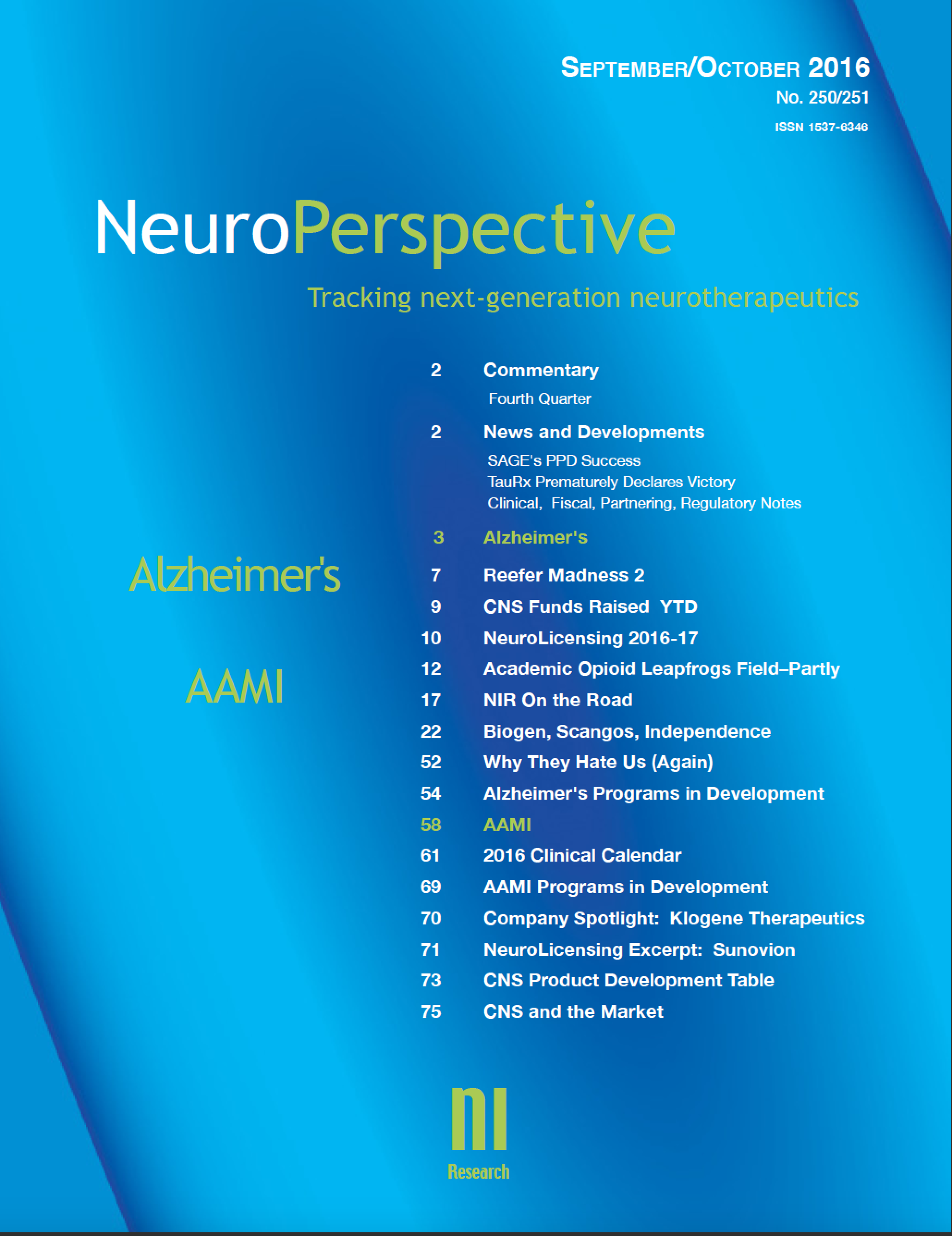NeuroPerspective has released its Spring 2025 issue, featuring comprehensive reviews of neurotherapeutics programs addressing Schizophrenia, ALS, and Addiction.
The Schizophrenia area is on the verge of its most significant transformation in decades, as the pharma industry is seeing a heated competition between companies attempting to ride the new wave of novel and refined mechanisms aimed at the trifecta of schizophreniform symptoms. Once dismissed as a backwater of generic antipsychotic me-too options, pharma companies have begun to invest heavily, with Bristol Myers Squibb‘s acquisition of Karuna, and JNJ’s purchase of Intra-Cellular Therapies, each with a $14 billion pricetag. From a commercial perspective, the clash of Cobenfy and Caplyta, with two massive marketing efforts behind them, will be one of the fascinating stories of 2025. The degree to which the return justifies the outlay will be a major factor in modulating the return of Big Pharma to Psychiatry, already underway.
Caplyta falls under the overly broad category of second-generation antipsychotics, its tolerability profile and effect on both positive and negative symptoms having set the stage for Intra-Cellular to have achieved an impressive launch on its own. Cobenfy is KarXT, the first muscarinic agonist to make it to the Market, with impact upon both positive and negative symptoms as well. KarXT has a flock of muscarinic hopefuls coming up behind it, with Neurocrine/Nxera having shown a signal in PhII. The challenge of this area was epitomized by the shocking failure of AbbVie/Cerevel‘s emraclidine, which had hoped to achieve through selectivity what KarXT had managed by using a peripheral blocker. One potentially crucial differentiator is the orthosteric vs. allosteric activation, both Cobenfy, the Neurocrine/Nxera program, and an earlier-stage entrant from Maplight, fall into the former category. Emraclidine was an allosteric modulator, as are programs owned by Neumora and Neurosterix, which could signal trouble ahead for them. CIAS, the cognitive impairment seen with schizophrenia, has been a difficult area to treat, but there are a number of intriguing novel mechanisms in clinical testing, from Kynexis, Atai/Recognify, Neurocrine/Nxera, Oryzon, Cerevance, and Alto Neuroscience.
ALS has been a neurodegenerative disorder where FDA standards have traditionally been relatively lax, as was the case for Amylyx‘s Relyvrio, whose accelerated approval was largely attributable to coaching by the then-head of neuroscience for the FDA. With that miscarriage of regulatory oversight eventually corrected, and Relyvrio pulled from the Market (after $400 million in futile sales), we are back to two mediocre therapies for ALS in the US. The hope that ATXN or EIF2b might be workable access points has been dashed, the most widespread question in the field is whether targeting TDP-43 dysfunction can be directly or indirectly workable. UNC13A has been attracting attention, with programs in progress by QurAlis/Lilly and Trace Neuroscience; SARM1 inhibitors are in development by Lilly, Nura Bio, and Asha; TRPML1 is targeted by Libra Therapeutics, Samsara, and Denali spin-out Tenvie. We do not take seriously generic workarounds like NeuroSense, or failed neurotrophic cell therapy (Brain Storm).
Addiction receives less pharma investment and attention than even stroke/TBI, and with NIH/NIDA now being subjected to experiments in institutional vivesection, that deficit will only worsen. Orexin-1 inhibitors and the mega-enterprise of GLP-1 agonism are two next-gen mechanisms of interest. Psychedelic compounds, including ibogaine and/or its analogs, are intriguing candidates for addiction disorders as well, and the early data in Opioid and Alcohol Abuse are promising.
The issue also includes a Company Spotlight appraisal of Neumora, which has entered a new era of existential risk following the failure of the first navacaprant PhIII; a review of significant clinical, fiscal, partnering, and regulatory events from 1Q:25, with particular attention to some unusual positive developments in the Pain space, and the damage done to the kappa-opoid thesis in depression.
A one-year (1-5 user) subscription to NeuroPerspective is $3300. A 6-10 user subscription is $5500. Other customized userbase and startup pricing options are available. The Spring issue is being made available as a single-issue purchase, for $900.
92 pages.

